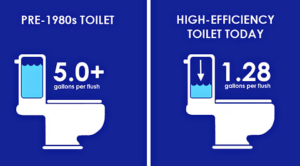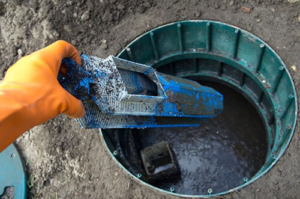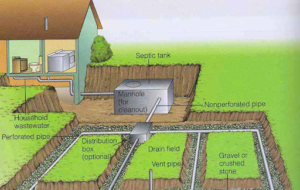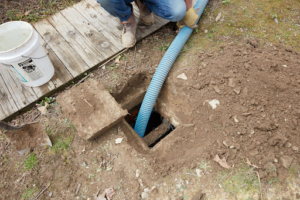If you own a home or are looking to purchase a home with a private septic system, it is important that you know how to take care of it. A septic can become one of the most expensive components of your home if it is not taken care of properly.
We have compiled a list of 5 maintenance tips that you can use to prolong the life of your system and save you money.
5 Septic System Maintenance Tips for Homeowners
It may be tempting to get rid of everyday items down the drain, but this habit can be detrimental to your septic system.
A septic system is designed to hold solids in the tank and leach out liquids into the field. The only type of solids and liquids that should be put into the system are the 3 P’s: Pee, Poop, and Paper. Anything else can be detrimental to the system.
The most common items that make their way into the septic system should not include grease, paint, bleach, feminine products, and food. Items like grease and paint can clog up the entirety of the system and cause major issues. Bleach or any cleaning agent that is dumped in large quantities can damage the microhabitat in the tank itself. Bacteria in the tank is extremely important for breaking down solids. An excess of feminine products and food can cause the system to fill and backup much quicker than if you only had the 3 P’s. Proper disposal of this waste is extremely important for the life of the system.
Everything that drains into the septic system has water. It is important to use this water as efficiently as possible to improve the operation of the system and reduce the risk of failure. It may not seem like it but having too much water in the system can impact the drainage of the leach field.
There are a few different ways you can change your water use in the home. If you have an older toilet consider upgrading to a newer one. Newer toilets hold less water in the holding tank and therefore when flushed send less water to the septic tank.
Also, consider using faucet aerators and efficient showerheads. Both these will limit how much water is let out. Finally, make sure you are using your washing machine with the correct settings for the load. If the load is smaller than what you have for the setting it can let lots of excess water into the system.
On many systems, installers are putting in filters to reduce the level of solids getting into the leach field. These filters are found on the outlet side of the tank. It is important to remember to clean this filter out once a year, usually during the fall.
If it doesn’t get cleaned it will work the opposite of what it was created for. It can lead to waste backing up into the house if nothing is getting past the filter.
It may not seem like a pleasant job but it is a relatively quick and important one. All you need to do is take the filter out of the tank and hose it off with water. If you don’t know where the outlet side is try to find the septic plan or have a septic company come out to help you find it.
When the company is out consider asking them to put a riser on the outlet side. This will make it easier for you to get access to your filter by not having to dig it out.
The leach field is just one component of the septic system. It is the area where all the liquids flow and eventually leach out into the sand around it.
It is very common for homeowners to forget where it is and put heavy items on top. Keeping the leach field clear of anything is important for its function and life.
It is important that you do not park on top of the leach field. Depending on the system this can damage pipes and cause the field to fail. If you have any plants or trees make sure the roots do not run into the leach field. Plants love water and leach fields have plenty of it. Roots will cause damage to the system. Finally, make sure that anything with high water runoff is placed far away from the leach field. Excess water into the leach field can cause issues with its draining functions.
Even while doing the above-listed maintenance items, it is important to keep up with pumping your septic. It is recommended that you pump your septic every 2-3 years. The frequency depends on household size, total wastewater generated, the volume of solids in wastewater, and septic tank size. After a few pumps, the septic company should be able to give a more accurate year.
Inspecting your septic system is also an important tool to keep an eye on the life of your septic. If you have any electric float switches, pumps, or other mechanical items, it is important to get these inspected more frequently. An inspection will make sure the system is functioning properly and can give you tips on how to improve the life of your septic.
If you are interested in getting your septic system inspected, Norway Hill Home Inspections can help you!
The list of maintenance items above is a great way to protect your septic system. If you have any issues arise that you don’t know how to fix it is important that you contact a septic company. A septic system is not something you want to ignore.
Stay tuned in to our blog for other home maintenance tips and all of the home care needs you need to know!






